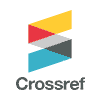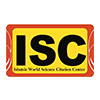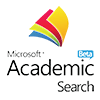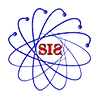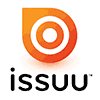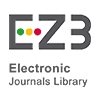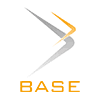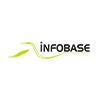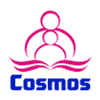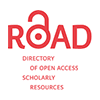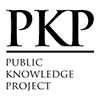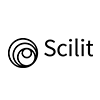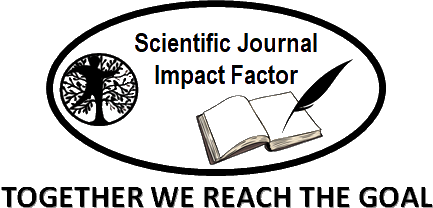Development of E-Modules Based on Discovery Learning Oriented to Mathematical Representation Ability of High School Students
Abstract
The low mathematical representation ability of students encourages the author to develop a learning e-module that can facilitate this ability. This research aims to find out how the characteristics of valid, practical, and effective learning e-modules and to determine the validity, practicality, and effectiveness of discovery learning-based e-modules oriented to students' mathematical representation skills. This type of research is Research and Development (R&D). The development model used in this research is the ADDIE development model which includes the stages of Analysis, Design, Development, Implementation, and Evaluation. The test subjects in this study consisted of two types, namely expert test subjects and product test subjects. The expert test subjects were two lecturers from the Mathematics Education Department at Yogyakarta State University, while the product test subjects were 35 X grade high school students. Expert trials were conducted to assess the validity or feasibility of the products developed. Product trials were conducted to assess the practicality and effectiveness of the developed products. The results showed that the e-module developed met the criteria of valid, practical, and effective. This research produces e-modules that can be used in mathematics learning to facilitate students' mathematical representation skills.
Keywords
Full Text:
PDFReferences
Branch, R. M. (2009). Instructional Design: The ADDIE Approach. New York, NY: Springer.
Castronova, J. (2002). Discovery Learning for The 21st Century: What is it and How does it Compare to Traditional Learning in Effectiveness in The 21st Century?. Literature Reviews, Action Research Exchange (ARE), 1(2). [Online]. Diakses dari teach.valdosta.edu/are/Litreviews/vol1no1/castronova_litr.pdf
Depdiknas. (2003). Undang-Undang Republik Indonesia Nomor 20 Tahun 2003 Tentang Sistem Pendidikan Nasional.
Fikri, H., & Madona, S. A. (2018). Pengembangan Bahan ajar Berbasis Multimedia Interaktif. Yogyakarta: Samudra Biru.
Hosnan, M., & Sikumbang, R. (2014). Pendekatan Saintifik dan Kontekstual Dalam Pembelajaran Abad 21: Kunci Sukses Implementasi Kurikulum 2013. Bogor: Ghalia Indonesia.
Knuth, R. A., & Jones, B. F. (1991). What does research say about mathematics. Retrieved September, 10, 2006.
Keller, B. A., Hart, E. W., & Martin, W. G. (2001). Illuminating NCTM's principles and standards for school mathematics. School Science and Mathematics, 101(6), 292-304.
Kharisma, J. Y., & Asman, A. 2018. Pengemabangan Bahan Ajar Matematika Berbasis Masalah Berorientasi pada Kemampuan Pemecahan Masalah Matematis dan Prestasi Belajar Matematika. Indonesian Journal of Mathematics Education. 1 (1), 34-46.
Kilpatrick, J., Jane, S., & Bradford, F. (2001). Adding It Up: Helping Children Learn Mathematics. Washington, DC: National Academy Press.
Kumalasari, T., Rambe, I. W., Julia, N. T., & Asriati, W. W. (2022). Pelatihan Pengembangan Bahan Ajar dan Bahan Ajar Matematika di SMP Pangeran Antasari. J-ABDI: Jurnal Pengabdian Kepada Masyarakat, 2(7), 5673–5680. https://doi.org/10.53625/jabdi.v2i7.4133
Lestari, K. E., & Yudhanegara, M. R. (2018). Penelitian Pendidikan Matematika. Bandung: PT. Refika Aditama.
Minarni, A., Napitupulu, E. E., & Husein, R. (2016). Mathematical understanding and representation ability of public junior high school in North Sumatra. Journal on Mathematics Education, 7(1), 43–56. https://doi.org/10.22342/jme.7.1.2816.43-56.
Nieveen, N. (1999). Prototyping to Reach Product Quality. London: Kluwer Academic Publisher.
Patac, A. J. V., Patac, L. P., & Crispo, N. E. (2022). Students’ understanding of a geometric theorem: A case of grade 9 problem posing. JRAMathEdu (Journal of Research and Advances in Mathematics Education), 7(2), 105–115. https://doi.org/10.23917/jramathedu.v7i2.16394
Russell, J. D. (1974). Modular Instruction. Minneapolis: Burgess Publishing Company.
Sanjaya, I. I., Maharani, H. R., & Basir, M. A. (2018). Kemampuan Representasi Matematis Siswa pada Materi Lingkaran Berdasar Gaya Belajar Honey Mumfrod. Kontinu: Jurnal Penelitian Didaktik Matematika, 2(1), 72. https://doi.org/10.30659/kontinu.2.1.72-87
Singer, F., Sheffield, L. J., Freiman, V., & Brandl, M. (2016). Research On and Activities For Mathematically Gifted Student. Springer. 10.1007/978-3-319-39450-3_1.
Sudjana, N. (2016). Penilaian Hasil Proses Belajar Mengajar. Bandung: PT Remaja Rosdakarya.
Sugiyono. (2009). Metode Penelitian Pendidikan Pendekatan Kuantitatif, Kualitatif, dan R&D. Bandung : Alfabeta.
Utomo, D. P., & Syarifah, D. L. (2021). Examining mathematical representation to solve problems in trends in mathematics and science study: Voices from Indonesian secondary school students. International Journal of Education in Mathematics, Science, and Technology (IJEMST), 9(3), 540-556. https://doi.org/10.46328/ijemst.1685
DOI: http://dx.doi.org/10.18415/ijmmu.v12i9.6976
Refbacks
- There are currently no refbacks.
Copyright (c) 2025 International Journal of Multicultural and Multireligious Understanding

This work is licensed under a Creative Commons Attribution-NonCommercial-NoDerivatives 4.0 International License.
https://ijmmu.com
editor@ijmmu.com
facebook.com/ijmmu
Copyright © 2014-2018 IJMMU. All rights reserved.






